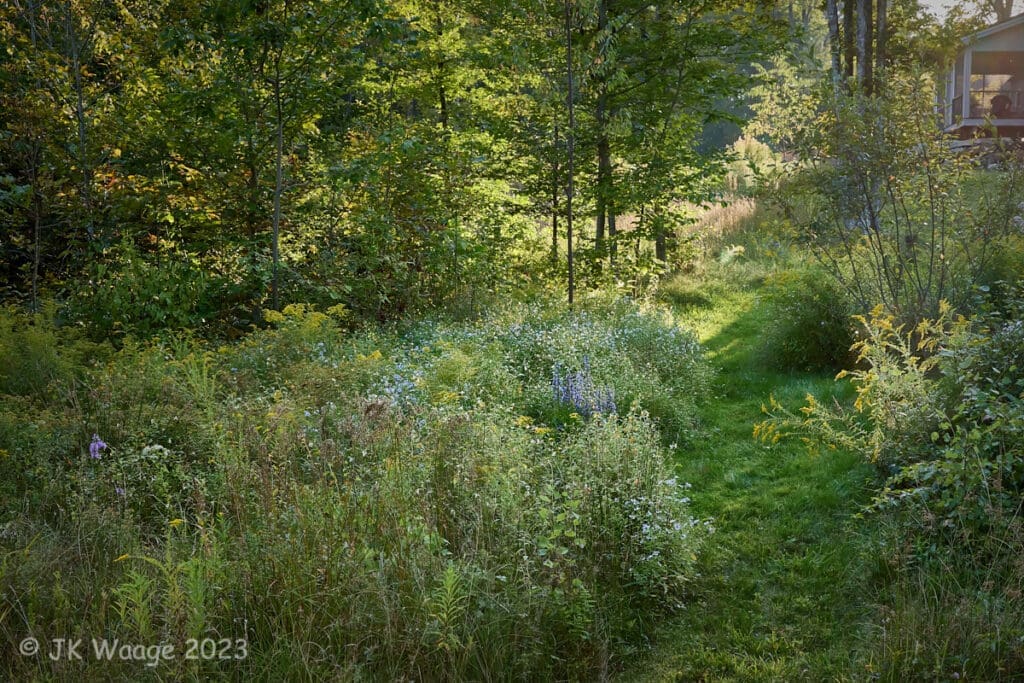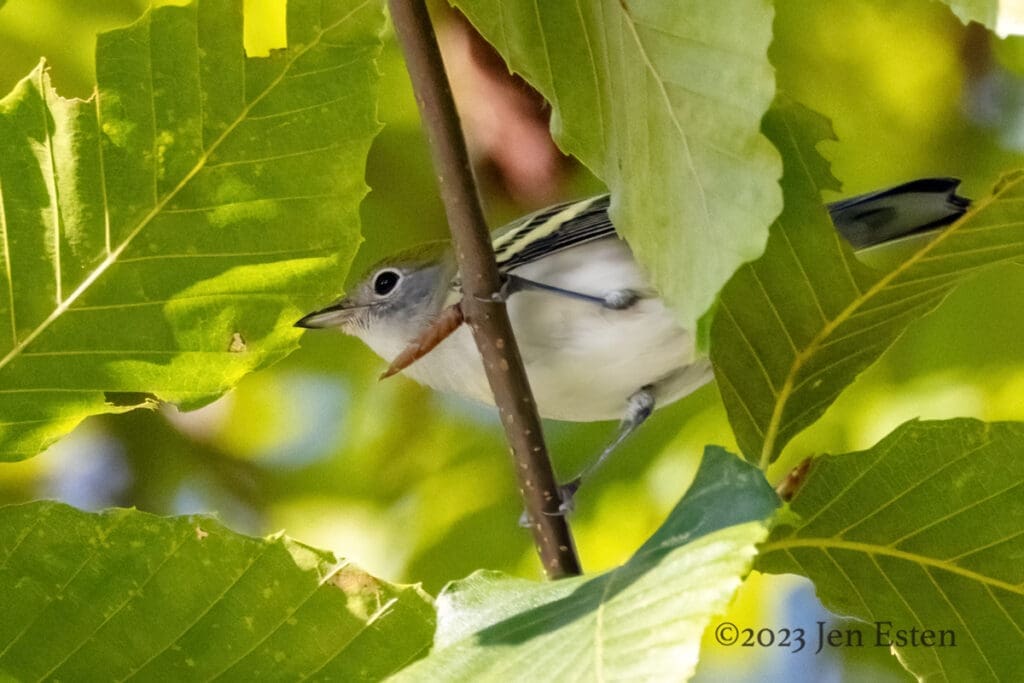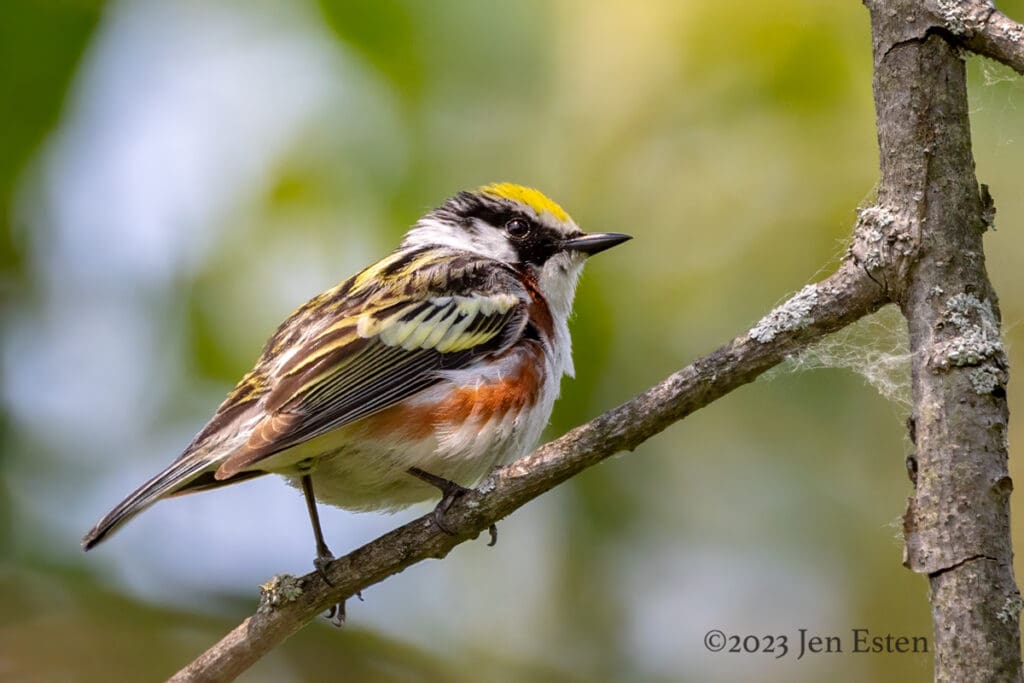Backyard Nursery
2023, No. 10 — September 16

Backyard Nursery
Our yard is mostly a self evolving meadow and pond that provides breeding habitat and food for many species. Anything that supports local wildlife is welcome as long as it behaves itself. We supplement with plantings of native species. Since we largely let nature decide what lives here, we also get to enjoy its flower arrangements like the Goldenrod and Aster above.
All of our yards can be valuable nurseries for many creatures. We have tried to provide a variety of feeding and nesting habitats. Let’s meet a few of the animals that have been using our yard this of summer.

Our pond is only 6 years old but has already been found by a variety of frogs, toads, turtles, ducks and other species.

Painted Turtles found the pond early; we now have of a variety of ages!

A chorus of American Toads, Spring Peppers and Gray Tree Frogs greets us each spring and by mid-summer some of the more “terrestrial” species are wandering the yard in search of insects and other invertebrates to feed on.

American Toads (Anaxyrus americanus) have a short tadpole stage and do most of their growing on land. They are not much bigger than a fingernail at first.
A frog that does much of its growing away from the water is the Gray Tree Frog (Dryophytes versicolor). This tiny young one is sitting on a raspberry leaf. These nocturnal frogs have the ability to change their color based on temperature, surroundings, and time of day, varying from green, gray or brown.


Pickerel Frogs (Lithobates palustris) are easily recognized by their dark square and rectangular spots. Don’t be surprised if you find one in the woods away from the water. Like the amphibians above, they are voracious predators of insects, worms, slugs, and other small invertebrates.
The pond provides others with food as well.

This juvenile Gray Blue Heron visits occasionally

This beautiful juvenile male Wood Duck frequented the pond, eating the water lily flowers and “making friends”.

Young Hooded Mergansers also visit – watch out Green Frog!
Wild Turkeys are welcome predators of grasshoppers and other insects. They often visit with their chicks.

Turkeys nest in shallow depressions on the forest floor at the base of a tree or under thick brush. We often have two mother turkeys raising her poults in our meadow which is full of grasshoppers and other insects. Baby turkeys don’t do well with too much rain and we think our turkeys may have lost their first broods. But they renested and recently we have seen them with young chicks
Turkeys depend on acorns and other nuts and fruits for food in the winter. In our area there are almost no acorns this year due to the late killing frost last spring. We hope they can survive the coming winter.

Occasionally a doe will bring her fawns to graze in our meadow.

Female (left) and male (right) Ruby-throated Hummingbirds
Hummingbirds love flowers – especially red ones. They get their protein from consuming tiny insects. Of course we all know how much they like sugar-water feeders too. We have 4 because hummers are so territorial and drive each other away from their favorite food sources.
Below is one of many juvenile Ruby-throated Hummingbirds that fledged in our yard this summer.

Rules for feeding hummingbirds – Don’t use dyed sugar water! Make a simple mixture of 4 parts boiling water to one part plain white sugar, cool and keep unused mix in the fridge. Clean and change every few days, especially when it’s hot.
And never never use honey! Bacteria and fungus from a mix made with honey kills hummingbirds.

We strive to provide breeding habitat for a wide a variety of species. A good thing to keep in mind is that most birds feed their babies caterpillars, not seeds and berries. So, to make a good bird nursery, you need trees that attract caterpillars: poplars, maples, oaks, cherries, etc.
Many birds prefer low dense foliage for nesting. We have a small stand of mixed young trees near a pond (above) that the Eastern Phoebes, Common Yellowthroat Warblers and Song Sparrows nest in every year. These same birds can be found all along the brushy areas on the edge of Pleasant Lake.

Female Common Yellowthroat Warbler

Song Sparrow in Goldenrod by the pond

Eastern Phoebe
Eastern Phoebes are one of the first migrants to return to NH in the spring, allowing them to frequently raise two broods. They, like Bluebirds, eat mostly insects, preferring to fly catch from a perch. Jon put up two wooden stakes on the edges of our meadow and garden which the Phoebes love to hunt from.

Juvenile Eastern Phoebe

Perches are a great way to entice Phoebes and Bluebirds to your yard. A Bluebird parent and fledgling are making use of one.
Cardinals, Chestnut-sided Warblers and Gray Catbirds nest fairly close to the ground in the new growth shrubs and trees near the edge of our meadow and along the edge if our driveway. They are common all around the lake.

The red plumage of this juvenile male Northern Cardinal is just beginning to grow in.

This scruffy looking juvenile Gray Catbird has lost all but one tail feather – waiting for new ones to grow in.

Juvenile Chestnut-sided Warblers look very different from their parents! Juvenile above, adult male below .

Chipping Sparrows like the young Hemlock trees that border the meadow – we have the perfect spot! They sometimes raise two broods over the summer. The young sparrow below will eventually have a chestnut colored cap.

Cedar Waxwing fledglings, unlike their parents, have striped chests. They nest in trees on the edge of the woods or in isolated trees in fields. Fruit orchards are ideal. While they don’t nest in our yard, they now bring their fledglings to hunt for insects every morning and evening.


Last week we had 45 Cedar Waxwings catching flying ants over the meadow! Above is an adult.

Goldfinches nest late with timing coinciding with the ripening of thistle seeds. They eat the seeds and use the down from Thistle for lining their nests. Thistle can be a difficult plant to handle but we tolerate several in the meadow just for the Goldfinches. They will also eat a large variety of other flower and grass seeds.

And of course we have Robins! Lots! They build a nest made largely from mud and lined with grass in most any tree. Their fledglings have spotted chests like the one above.
Bye for now… Jon and Jen

“The daisylike fringe of purple petals surrounds a disc as bright as the sun at high noon, a golden-orange pool, just a tantalizing shade darker than the surrounding goldenrod. Alone, each is a botanical superlative. Together, the visual effect is stunning. Purple and gold, the heraldic colors of the king and queen of the meadow, a regal procession in complementary colors.”
…
“That September pairing of purple and gold is lived reciprocity; its wisdom is that the beauty of one is illuminated by the radiance of the other. Science and art, matter and spirit, indigenous knowledge and Western science—can they be goldenrod and asters for each other? When I am in their presence, their beauty asks me for reciprocity, to be the complementary color, to make something beautiful in response.”
― Robin Wall Kimmerer, Braiding Sweetgrass
